Acne
Acne is a very common condition that affects most adolescents, as well as some adults; and can also occur in adults – even those who’ve previously never had issues.
Overview
While every individual is different, and genetics may play a role in acne, it is most commonly associated with periods of hormonal change, which is why the condition may be prevalent during puberty; and why some women may observe the onset or exacerbation of acne during pregnancy, or as part of menstruation.
As the condition is so common, there is a significant amount of misleading information shared about what causes acne, as well as how to ‘cure’ it. There is no evidence that diet, poor hygiene or sexual activity play a role in the condition; and cosmetic products or treatments can often aggravate the skin - causing acne to worsen, or creating secondary issues that require specialist dermatology treatment.
While acne can vary in severity (from a few spots appearing once in a while; to prolonged, significant issues that leave deep scarring) and the condition can present in different areas of the body, generally, all forms of acne can have a detrimental impact on self-confidence. In most teens, acne resolves itself once the effects of puberty hormones taper off (usually around the age of 20), but for some people, the condition can persist into adulthood, or recur later on.
Acne can appear anywhere on the body – except the palms of the hands and soles of the feet, which do not have sebaceous glands - but the condition most commonly presents on the face, back, chest, shoulders or arms.
There are 6 main manifestations of acne, each of which can cause distress – but some may present more serious issues than others if left untreated, or if treated improperly.
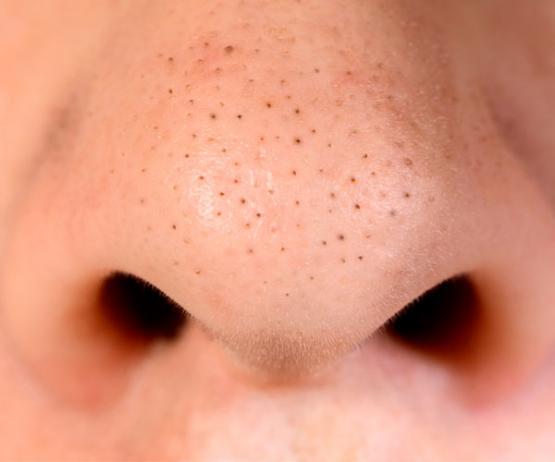
These small black, dark brown, or yellowish bumps develop on the skin. Contrary to popular belief, their colour does not indicate they’re ‘filled with dirt.’ Instead, blackheads are tinted due to the colour produced by the inner lining of the hair follicle.
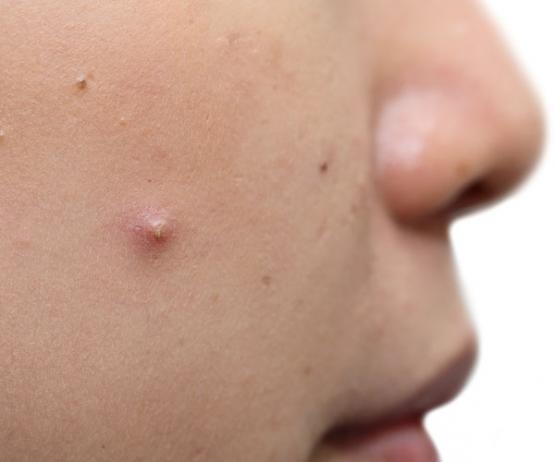
While these will have a similar appearance to blackheads, whiteheads lack the discolouration, may be firmer to the touch, and do not respond to traditional extraction methods, such as ‘squeezing.’
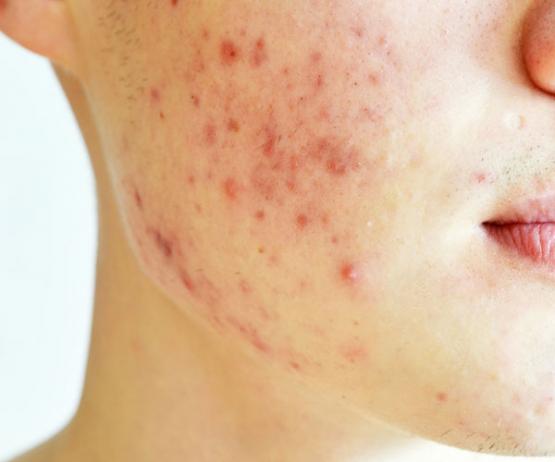
These small red bumps may feel tender or sore, and many people consider them to mean they have a spot ‘coming up.’ Extraction methods such as ‘squeezing’ may result in further inflammation, soreness, and even cause more serious issues like infection or permanent scarring.
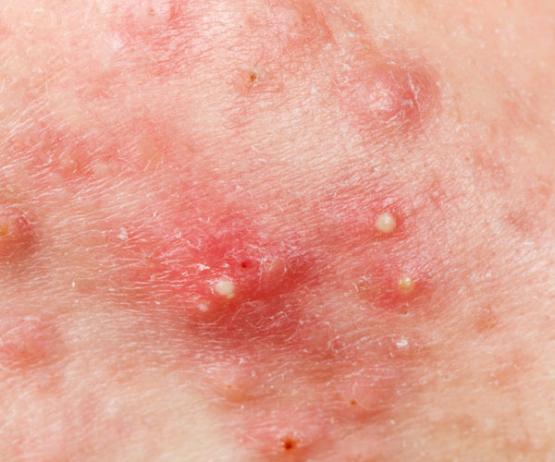
While these may begin as papules, this type of spot is noted to feature a white tip in the centre, caused by a build-up of pus (a liquid produced in infected tissue, consisting of dead white blood cells and bacteria with tissue debris and serum.) Extracting, or ‘squeezing’ pustules may be tempting, but can worsen the problem, leading to infection or permanent scars.
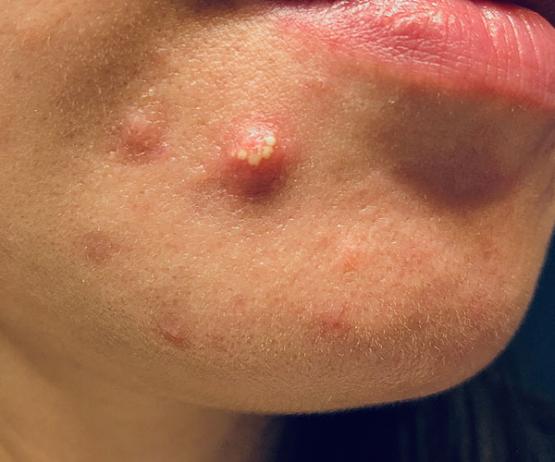
These large hard lumps build up beneath the surface of the skin and can be very painful. They are more serious than the more common papules, and affect deeper layers of the skin. Extraction methods such as ‘squeezing’ should be avoided lest they cause more damage, infection or permanent scarring to the skin.
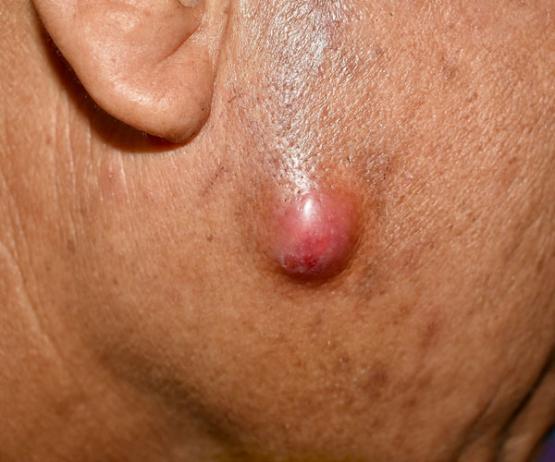
Also called ‘cystic acne,’ these are the most severe form of acne, where the pores of the skin become blocked, resulting in inflammation and infection. Cysts present as large pus-filled lumps, and they carry the greatest risk of permanent scars. Never try to extract a cyst yourself, as to do so can create serious complications and damage.

These small black, dark brown, or yellowish bumps develop on the skin. Contrary to popular belief, their colour does not indicate they’re ‘filled with dirt.’ Instead, blackheads are tinted due to the colour produced by the inner lining of the hair follicle.

While these will have a similar appearance to blackheads, whiteheads lack the discolouration, may be firmer to the touch, and do not respond to traditional extraction methods, such as ‘squeezing.’

These small red bumps may feel tender or sore, and many people consider them to mean they have a spot ‘coming up.’ Extraction methods such as ‘squeezing’ may result in further inflammation, soreness, and even cause more serious issues like infection or permanent scarring.

While these may begin as papules, this type of spot is noted to feature a white tip in the centre, caused by a build-up of pus (a liquid produced in infected tissue, consisting of dead white blood cells and bacteria with tissue debris and serum.) Extracting, or ‘squeezing’ pustules may be tempting, but can worsen the problem, leading to infection or permanent scars.

These large hard lumps build up beneath the surface of the skin and can be very painful. They are more serious than the more common papules, and affect deeper layers of the skin. Extraction methods such as ‘squeezing’ should be avoided lest they cause more damage, infection or permanent scarring to the skin.

Also called ‘cystic acne,’ these are the most severe form of acne, where the pores of the skin become blocked, resulting in inflammation and infection. Cysts present as large pus-filled lumps, and they carry the greatest risk of permanent scars. Never try to extract a cyst yourself, as to do so can create serious complications and damage.
Causes of Acne
Blackheads, whiteheads, papules and pustules are the most commonly seen in cases of mild- to moderate acne, while the more serious presentations of nodules and cysts are rarer.
Acne is caused when the sebaceous glands in the skin produce excess oil, while at the same time, the follicles on the skin are blocked by a build-up of dead skin cells. This overproduction of oil results in the build-up that causes blackheads and whiteheads, as well as the more painful papules and pustules.
In nodules, this process occurs deeper in the layers of the skin, and in the instances of cystic acne, the pores of the skin become so blocked that they result in infection and inflammation.
While all acne can leave scarring – particularly if efforts to extract, or ‘squeeze’ spots worsen the condition – the risk is highest with cystic acne, which is likely to require medical attention.
Treatment of Acne at Derma
The majority of adolescents and adults suffer from mild acne, but luckily the condition can often be managed using topical over-the-counter acne treatments that can be obtained from a pharmacist.
These over-the-counter products incorporate a variety of anti-acne agents, such as benzoyl peroxide, which is suitable for most people, and is often used once a day or less frequently, if it causes dryness.
More severe cases require treatment with antibiotics or, if they fail to eradicate the acne, with isotretinoin.
Isotretinoin is commonly known by its trade name, Roaccutane. The side effects of isotretinoin treatment can be serious, so only dermatologists are allowed to prescribe it, and close monitoring of the patient is required during the treatment.
Find out more about Acne Treatment options at Derma.
What to Expect
Your appointment will begin with a thorough analysis of your skin and medical history, followed by recommended treatment options.
The dermatologist will explain all of the potential side-effects, to enable you to select the best acne treatment option for you. If you are suitable for treatment with isotretinoin, and it is the right option for you, please note that further tests and follow-up appointments will be required to manage and monitor your treatment.
Whatever your needs, you can rest assured that Derma will provide the very best care for your skin, with access to the latest research and treatments. We have a very high success rate in treating acne, with almost all patients seeing significant improvements over time.
Frequently Asked Questions
Acne is caused by a combination of factors such as how much oil (sebum) your skin produces, how clogged your hair follicles get by the oil and dead skin, how much bacteria is present on the skin and how much inflammation all of these factors cause. Occasionally grease from the hair or hair products can contribute to acne on the forehead and it is worth reviewing and changing the products used and ensuring the products are washed out of your hair thoroughly.
Acne is caused by a combination of factors such as how much oil (sebum) your skin produces, how clogged your hair follicles get by the oil and dead skin, how much bacteria is present on the skin and how much inflammation all of these factors cause. Treatment can include over the counter products like benzoyl peroxide that can be used as a wash or as a cream that is applied after cleansing the skin. The cleansing process should be gentle and avoid the use of abrasive products like scrubs as they can actually worsen the acne. Use oil-free or non-comedogenic products only and resist the urge to squeeze the spots as this worsen it and can lead to scarring. If there are signs of scarring or the spots are persistent or painful then you should seek medical assistance.
Acne is caused by a combination of factors such as how much oil (sebum) your skin produces, how clogged your hair follicles get by the oil and dead skin, how much bacteria is present on the skin and how much inflammation all of these factors cause. Treatment can include over the counter products like benzoyl peroxide that can be used as a wash or as a cream that is applied after cleansing the skin. The cleansing process should be gentle and avoid the use of abrasive products like scrubs as they can actually worsen the acne. Use oil-free or non-comedogenic products only and resist the urge to squeeze the spots as this worsen it and can lead to scarring. If there are signs of scarring or the spots are persistent or painful then you should seek medical assistance.
Fungal acne, also known as Malassezia folliculitis, is a condition that looks very similar to acne. It produces papules and pustules that often appear on the face, upper back, chest, shoulders and arms. The difference to normal acne is that they are intensely itchy and is commonly found in hot, humid climates, particularly those affected by excessive sweating. It is treated with oral antifungal medication. Topical antifungals can be used for prophylaxis as recurrence is common.
Send an Enquiry